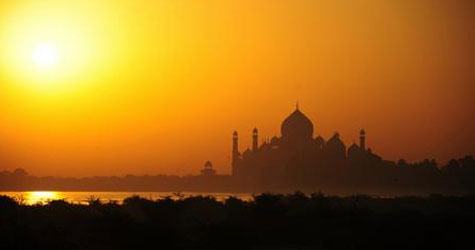Intersolar India highlights the potential of the rapidly growing Indian solar market and presents technical solutions.
India is one of the fastest growing solar markets worldwide. This development is driven by policies introduced by the Indian government which over the coming years wants to turn India into one of the most important “solar states”. This is the environment in which the international solar industry is meeting for the fourth year running at India’s largest exhibition and conference for the solar industry, Intersolar India, from November 6 – 8, 2012.
In hall 1 of the Bombay Exhibition Centre (BEC) in the Indian capital of Mumbai, around 350 exhibitors are expected to present their latest products and services from photovoltaics and solar thermal technologies across an exhibition space covering 20,000 square meters. The Intersolar India Conference kicks off one day prior to the exhibition. From November 5–8, 2012, over 700 industry experts are convening at the Leela Kempinski Hotel in Mumbai and t he Bombay Exhibition Centre (BEC) to discuss the latest developments across international solar markets.
The Indian solar market is undergoing sweeping developments. While, according to figures published by the Ministry for New and Renewable Energy (MNRE), India had a mere 10 megawatts (MW) of installed photovoltaic capacity in 2009, this figure had risen to over 200 MW by the end of 2011. According to MNRE forecasts, the total photovoltaic (PV) output will exceed the two-gigawatt (GW) mark before the end of this year. The Indian government has even more ambitious goals for the future: According to the Jawaharlal Nehru Solar Mission (JNNSM), the target is for 20 GW of capacity to be installed by 2022, making India one of the most promising and fastest growing solar markets in the world.
This is the environment in which the international solar industry is meeting for the fourth year running at India’s largest exhibition and conference for the solar industry, Intersolar India, from November 6 – 8, 2012. Around 350 exhibitors are expected to present their latest products and services from photovoltaics and solar thermal technologies across an exhibition space covering 20,000 square meters. Under the motto Connecting Solar Business, the exhibition helps demonstrate existing technological potential and strengthens the business network at an international and local level.
Plentiful amounts of sunshine for the growing electricity demand
According to Debashish Majumdar, Chairman and Director of the Indian Renewable Energy Development Agency (IREDA), India’s thirst for energy will double by 2020. The solar industry has the ideal prerequisites to play an eminent role in meeting this demand. According the management consultancy Ernst & Young, 250 to 300 days of sunshine per year and 4 to 7 kilowatt hours of insolation per square meter make India one of the most promising locations for solar energy in the world. In addition, there is no lack of space for solar power plants. Just one percent of the country’s surface area would be enough to fully cover the forecasted electricity demand with PV by 2031.
Great potential for large PV power plants and microgrids
India’s government has long recognized the immense potential of solar technology in meeting the country’s energy demand. In addition to JNNSM, the expansion of capacities is mainly promoted locally by individual federal states. In the federal state of Gujarat, for example, a fixed feed-in tariff has been agreed and Power Purchase Agreements covering around 965 MW have been signed. Many other Indian states are expanding their capacities with the help of tenders for PV projects. In the federal state of Karnataka, for example, 60 MW were awarded recently as part of a tender and a further 25 MW in Orissa and 200 MW in Madhya Pradesh have been won. More tenders of various sizes are continually added: 250 MW are up for tender in Rajasthan while the federal state of Tamil Nadu is planning to have 3 GW installed in the coming three years.
On November 5, the Intersolar India Conference opens with a double session on current and future developments within India’s solar market, entitled India’s PV Market. On November 6, starting from 9:00am, the Large-Scale PV Systems lecture series looks at topics ranging from the planning and financing through to the construction and maintenance of these systems.
India not only holds great potential for large-scale PV systems, but also for grid-independent solar systems and the small local power grids known as microgrids. With 400 million potential customers, this market offers similar potential to the market for cell phones, which enabled one in two Indian households to own a cell phone within the space of just a few years. The consultancy Bridge to India estimates that the photovoltaic market for telecommunication systems alone will account for 2 GW within the next five years. In addition, there is demand for PV installations to provide electricity for basic needs, such as lighting and electrical appliances.
For this reason, the Intersolar India Conference concentrates on rural electrification in a double session entitled Off Grid PV Market India, which takes place on November 6 from 9:00am to 1:00pm. The strong insolation also offers ideal conditions for the application of solar thermal technologies, for instance in the use of sola r process heat for commercial buildings and industry. Several presentations on November 5 from 10:00am to 6:00pm and on November 6 from 4:15pm to 6:00pm focus on opportunities for solar thermal technologies.
New category for the Intersolar AWARD: Solar projects in India
As part of the Solar Projects category, which was first introduced in 2012, the Intersolar AWARD presents a prize in the category of Solar Projects in India for the first time at Intersolar India. The solar industry’s innovation award in the areas of Photovoltaics, Solar Thermal Technologies and PV Production Technologies was presented at Intersolar Europe in Munich on June 13. To be valid for entry into the category of Solar Projects in India, projects must be fully completed but must not be older than two years at the time the application for the Intersolar AWARD is submitted.
Exhibitors at Intersolar India 2012, Intersolar North America 2012, Intersolar China 2011 and Intersolar Europe 2012 are entitled to apply. Companies wishing to apply for the Intersolar AWARD in the category Solar Projects in India may register via the Intersolar India website under Exhibitor Services, Marketing + Promotion, Intersolar AWARD from August. The registration forms can be downloaded from h ere.
Intersolar India 2012 takes place at the Bombay Exhibition Centre (BEC) in Mumbai from November 6–8.











